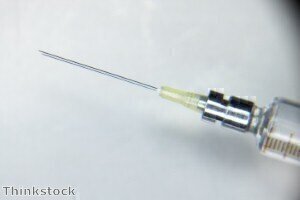News & Views
Going Green for Tea Could be Healthy
Jun 23 2018
A compound found in green tea could be key to preventing heart attacks and strokes caused by Atherosclerosis. Scientists from Lancaster University and the University of Leeds currently studying the compound’s ability to reduce amyloid plaques in the brain in Alzheimer’s disease also found that it breaks up and dissolves potentially dangerous protein plaques found in the blood vessels.
Atherosclerosis is the build-up of fatty material inside arteries which can reduce the flow of blood to the heart and brain. In advanced stages of the condition, a protein called apolipoprotein A-1 (apoA-1) can form amyloid deposits, similar in structure to those associated with Alzheimer’s disease. These deposits build up within atherosclerotic plaques. Here, they increase the size of the plaques, further restricting blood flow and making the plaques less stable, increasing the risk of a heart attack or stroke.
Researchers found that epigallocatechin-3-gallate (EGCG), most commonly associated with green tea, binds to the amyloid fibres of apoA-1. This converts the fibres to smaller soluble molecules that are less likely to be damaging to blood vessels.
“The health benefits of green tea have been widely promoted and it has been known for some time that EGCG can alter the structures of amyloid plaques associated with Alzheimer’s disease,” said David Middleton, Professor in Chemistry at Lancaster University. “Our results show that this intriguing compound might also be effective against the types of plaques which can cause heart attacks and strokes.”
Now, the team are working on finding ways of introducing effective amounts of EGCG into the bloodstream without it being necessary to drink large and potentially harmful quantities of green tea. This could involve modifying the chemical structure of EGCG, making it easier to be absorbed from the stomach and more resistant to metabolism, or developing new methods to deliver the molecule to the plaques - such as via an injection.
“The findings of this round of studies are very encouraging. We now need to apply the best scientific techniques to find how we can take the molecular ECGC element from green tea, and turn it into a functioning tool to combat life-limiting health issues,” said Professor Sheena Radford, Director of the Astbury Centre for Structural Molecular Biology at the University of Leeds and co-author of the research.
The research was funded by the British Heart Foundation and also part-funded by BBSRC and published in the Journal of Biological Chemistry.
Digital Edition
Lab Asia 31.2 April 2024
April 2024
In This Edition Chromatography Articles - Approaches to troubleshooting an SPE method for the analysis of oligonucleotides (pt i) - High-precision liquid flow processes demand full fluidic c...
View all digital editions
Events
Apr 22 2024 Marrakech, Morroco
Making Pharmaceuticals Exhibition & Conference
Apr 23 2024 Coventry, UK
Apr 23 2024 Kintex, South Korea
Apr 23 2024 Seoul, South Korea
Apr 24 2024 Jakarta, Indonesia




.jpg)













